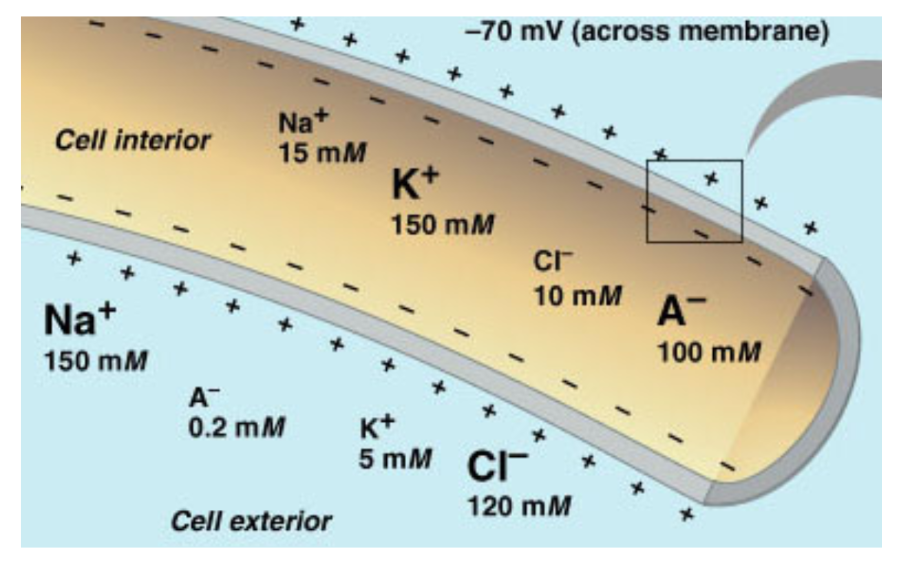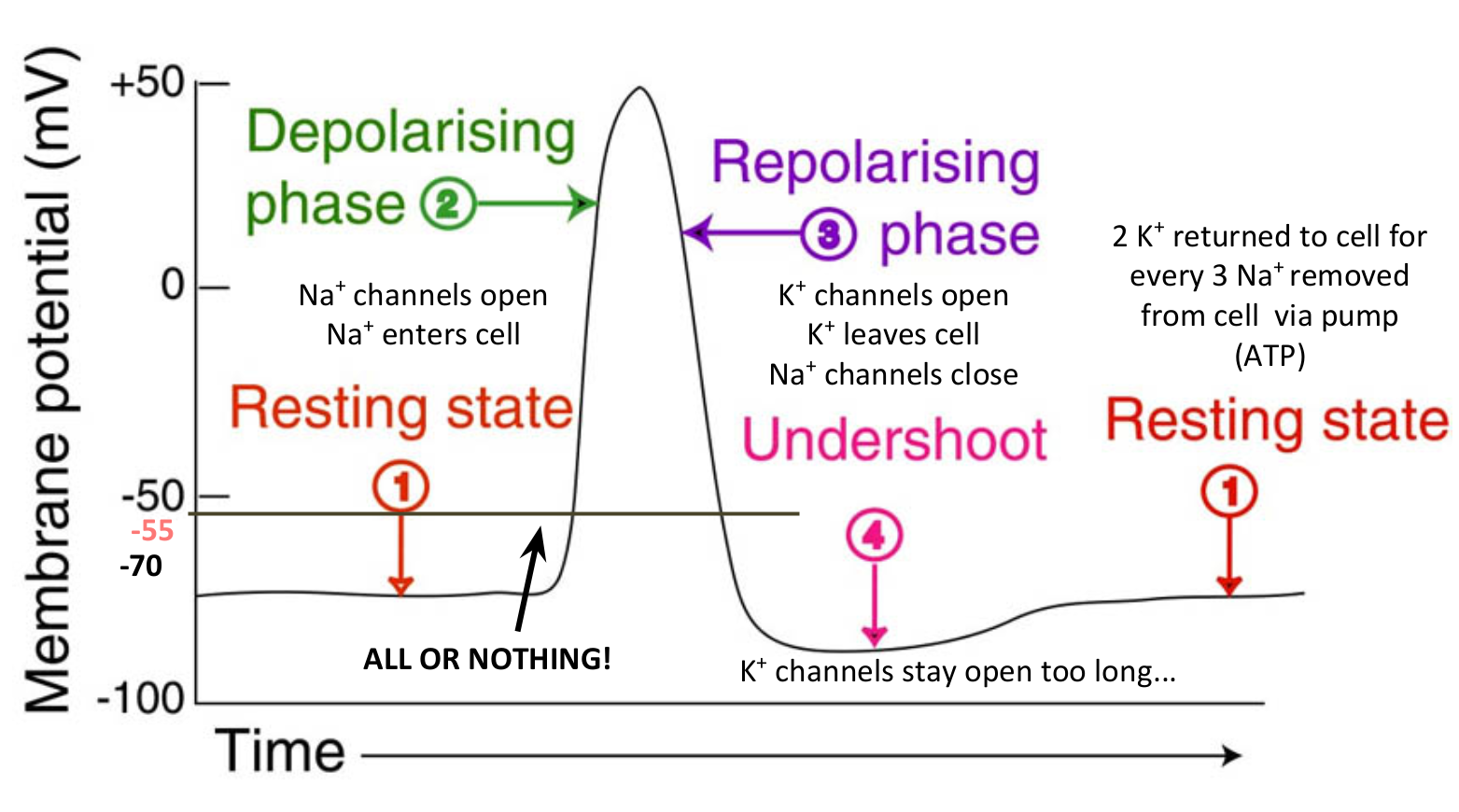Nerve Impulses
1/9
There's no tags or description
Looks like no tags are added yet.
Name | Mastery | Learn | Test | Matching | Spaced |
|---|
No study sessions yet.
10 Terms
How do neurons send messages? What is an Ion?
Electrochemically with an electrical signal
Ions are electrically charged ions
What are some important ions in the body?
Sodium
Chloride
Calcium
Potassium
+ Some negatively charged proteins
What kind of membrane is a nerve surrounded by, what does it do?
Semi-permeable membrane that allows some ions to pass through and blocks the passage of other ions
What does it mean when neurons are ‘at rest’? What is the charge of neuron when at rest?
The neuron is not sending a signal
Charge inside is negative relative to the outside

How does the cell membrane allow only some ions to pass through?
Selective ion channels
+ A pump that uses energy to move 3x sodium of the neuron for ever 2x potassium ion that enters
When at rest, what is the ion concentrations inside and outisde the cell? & How easily can they cross the membrane
More potassium within the cell. Can cross easily
More chlorine and sodium outside the cell. Have a difficult time crossing the membrane
Neg charged proteins inside neuron cannot cross membrane

What is resting potential?
the difference in voltage between inside and outside of cell when balanced at rest (-70 mV)
The inside of the neuron is 70mV less than the outside
At rest there are more sodium ions outside the neuron and more potassium ions inside
What is action potential? & depolarisation
Occurs when a neuron sends information down the axon away from the cell body (electrical impulse/nerve impulse)
The stimulus causes the resting potential to move towards 0mV – depolarisation.
When depolarization reaches -55mV the neuron will fire an action potential.
-55mV is the THRESHOLD. If neuron does not reach the threshold, no action potential will fire
How does an action potential happen?
Exchange of ions across the membrane
A stimulus is detected. The stimulus causes the sodium channels to open.
Sodium ions rush into the neuron (positive ions moving into a highly negative environment)
If action potential reached -55mV, depolarisation happens: voltage-gated Na+ channels open up one after the other down the length of the axon. Na+ ions stream in due to the concentration gradient.
Action potential travels down the length of the axon
Potassium channels take longer to open but when they do, potassium rushes out of the cell – this reverses the polarisation.
Sodium channels start to close at this time.
Causes action potential to startto return to -70mV (repolarisation)

What is hyperpolarisation?
Action potential goes past -70mV (hyperpolarisation) because potassium channels stay open a bit too long (undershoot).
The sodium- potassium pump returns Na+ to the outside of the cell and K+ to the inside of the cell.
Gradually concentrations return back to resting levels and cell returns to -70mV.